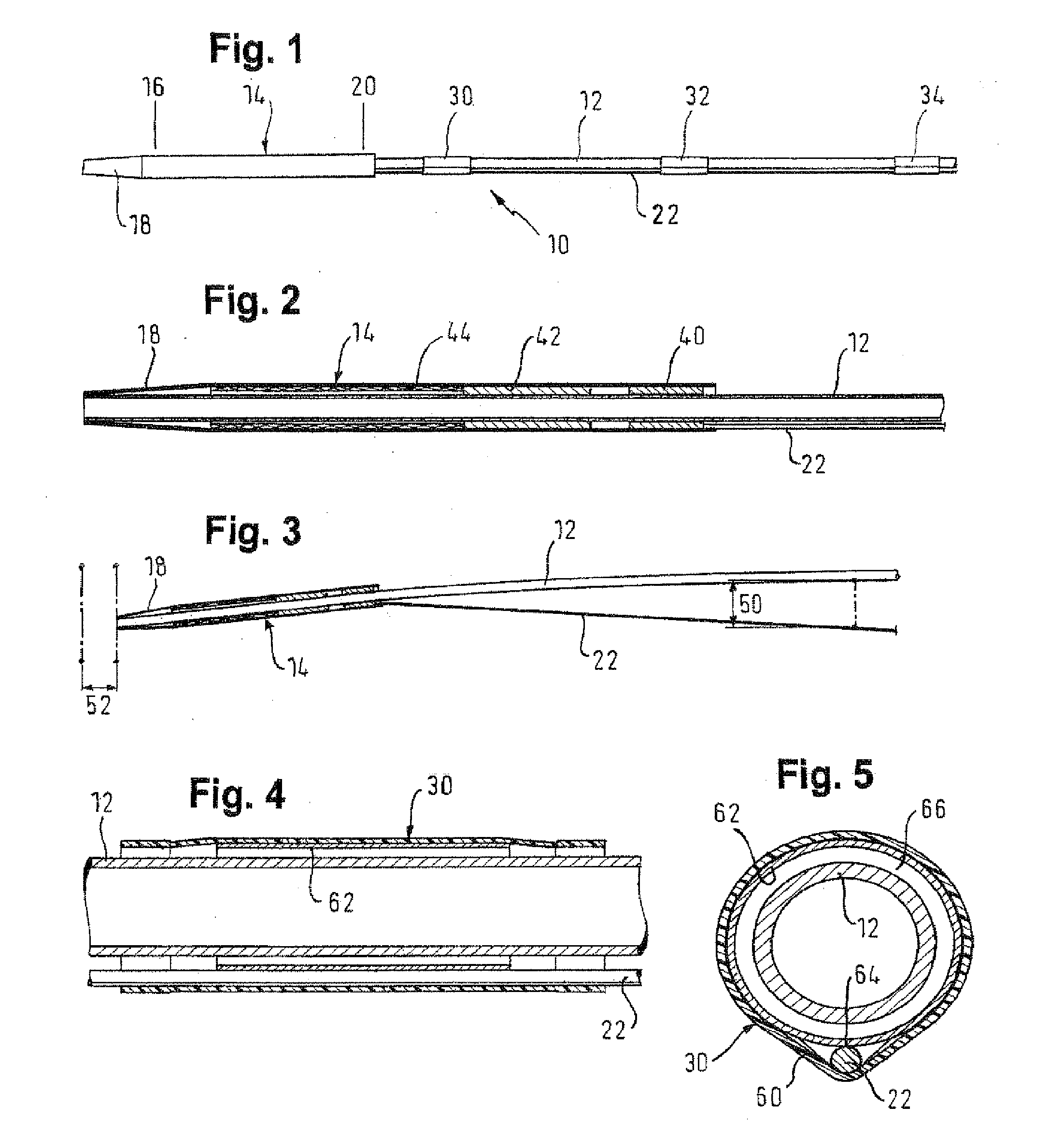Delivery system for a prosthesis
a delivery system and prosthesis technology, applied in the field of prosthesis delivery systems, can solve the problems of increasing unnecessarily the complexity of construction and the passing diameter of the delivery system, and achieve the effect of reducing the amount and reducing the adverse effects of winding
- Summary
- Abstract
- Description
- Claims
- Application Information
AI Technical Summary
Benefits of technology
Problems solved by technology
Method used
Image
Examples
Embodiment Construction
[0026]Looking first at FIG. 1, many of the components of the system will be familiar to those skilled in the art. The delivery system 10 of which the distal part is shown in FIG. 1 is based on a tube 12 which constitutes a catheter shaft. That tube carries at its distal end 14 a sheath 16 with a tapered tip 18 and a proximal end 20 within which lies (not visible in FIG. 1) an annulus to which is welded a pull wire 22. When the stent inside the sleeve 16 is to be deployed, tension is put on the pull wire 22 and this tension is passed through to the sheath 16 via the annulus within the proximal end 20 of the sheath. The sheath is pulled proximally, until its distal end 18 is proximal of the proximal end of the stent within the sheath 16, at which point to the stent is fully deployed and the delivery system can be withdrawn proximally out of the bodily lumen.
[0027]In FIG. 1, the catheter shaft is shown rigorously straight. However, in a typical placement within the human body, the shaf...
PUM
 Login to View More
Login to View More Abstract
Description
Claims
Application Information
 Login to View More
Login to View More - R&D
- Intellectual Property
- Life Sciences
- Materials
- Tech Scout
- Unparalleled Data Quality
- Higher Quality Content
- 60% Fewer Hallucinations
Browse by: Latest US Patents, China's latest patents, Technical Efficacy Thesaurus, Application Domain, Technology Topic, Popular Technical Reports.
© 2025 PatSnap. All rights reserved.Legal|Privacy policy|Modern Slavery Act Transparency Statement|Sitemap|About US| Contact US: help@patsnap.com


